Last summer, when EAA AirVenture Oshkosh exploded with news that FAA released Mosaic, nearly all the attention was on increased weight and speed, and capabilities like retractable gear, controllable props, even multiengine or turbine aircraft. Christmas in July, I called it, so plentiful were FAA’s gifts to pilots and industry.
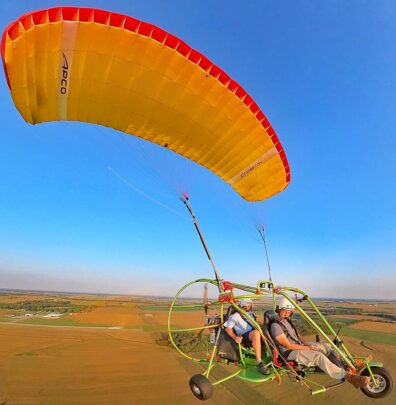
Excellent in-flight images by Roy Beisswenger of Easy Flight.
While all these items will add capability, they also increase prices. Is that what you want? Let me guess not for most readers. This website thrives on affordable aviation. Features that add substantial cost limit affordability.
Mosaic will trigger a bifurcation within the LSA community and it goes something like this: If you like the airplane you have now, you probably will not like the price of a Mosaic LSA. However, if you feel constrained in weight-carrying capacity or speed or if you want multiple engines, then Mosaic may address your wishes.
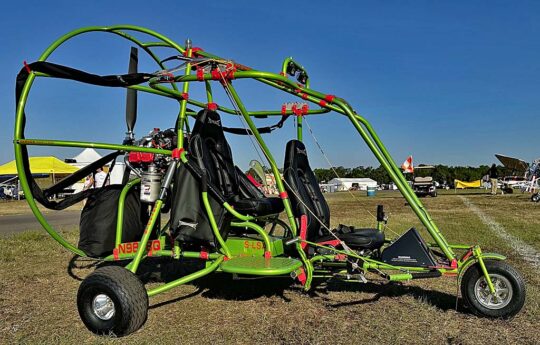
Powrachute does beautiful powder coating in-house.
The great news? You can have it both ways. Those current-day LSA that do their job perfectly need not change. Because they don’t have to “upgrade” to features (that they don’t even need), these LSA can maintain much more affordable prices than we’ll see in mLSA. Am I exaggerating? We’ll know by second quarter 2025 when Mosaic is finally released as an official regulation.
Until then…
Powrachute Delivers!
…at Affordable Prices
In 2020 — remember back then? — Covid was the only word anyone spoke, or so it seemed. This upset the global economy like few other events in human history. Naturally, the light aircraft community was similarly affected. Yet, as you hear in the video below, after a few months passed and we all began to see the situation more clearly, Powrachute owner Galen Geigley reported business roared back. Amazing!
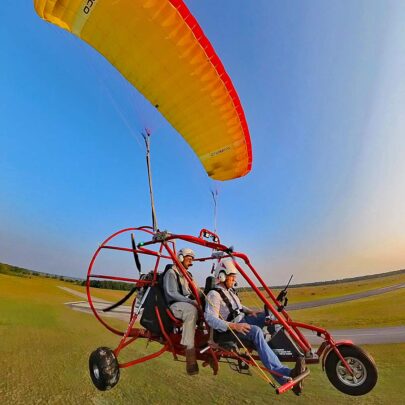
Indeed, as Powrachute owner Galen Geigley states in the video below, more than 8,000 powered parachutes are flying in the USA. The high-volume sales from two decades back may have matured but a substantial number of pilots ended up loving their PPCs.
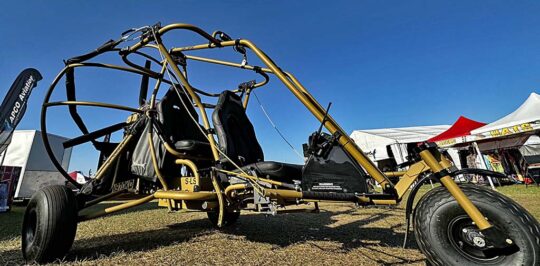
Powrachute models are also very affordable. Let’s start with the two-seat Special LSA Pegasus model powered by Rotax 582 two-stroke. Base price is a very affordable $27,300 though you may want some of the options the company offers.
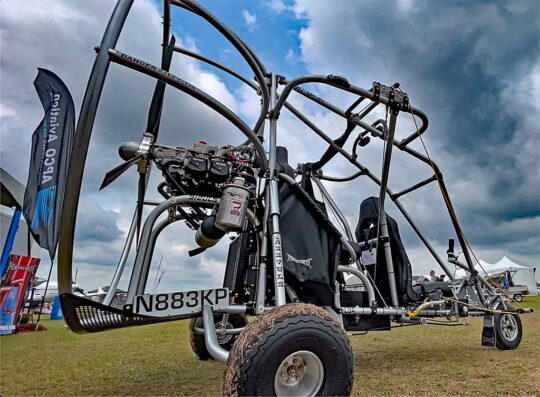
You might not notice but this image shows the entire aircraft. The parachute wing is hanging in a bag on the opposite side of the carriage.
AirWolf is available with the 80-horsepower Rotax 912 — a favorite of many as it uses 87-octane regular and is as bullet proof as engines get — for less than $41,000. However, dealer Roy Beisswenger said, “Most pilots buy the 912ULS AirWolf with 100 horsepower,” which retails for a ready-to-fly base price of $43,195. All prices stated in late 2023 are subject to change.
Standard equipment includes the following, yet this description does not include everything you get: Rotax 912ULS 100 horsepower engine with stainless steel exhaust; dual quad hydraulic spring-over suspension; Super 912 (EIS) Electronic Information System with altimeter; electric fuel pump; 10-gallon fuel tank, choice of color in powdercoat finish; rigid chromoly frame extending the full length of the carriage; four-point harness seatbelts; deluxe dual seats in tandem configuration; ground steering tow handle; and more. See the links below for more detail.
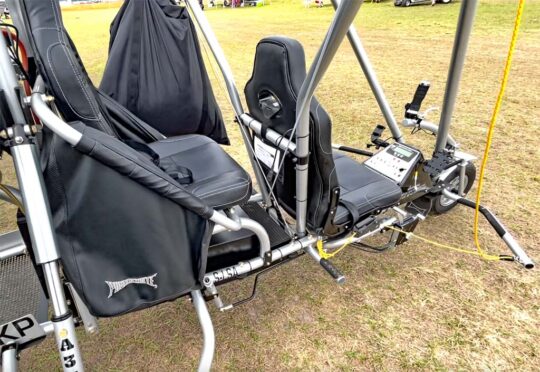
TECHNICAL SPECIFICATIONS
Powrachute AirWolf 912
all specifications provided by the manufacturer
- Weight — 462 pounds without wing / 486 pounds with wing
- Width — 81.5 inches with tundra tires
- Height — 89 inches with air shocks
- Length — 128 inches
- Stall Speed — virtually stall resistant
- Max Payload with 550 wing — 700 pounds at sea level
- Max payload with 500 wing — 650 pounds at sea level
- Take off Roll — 50 feet to 300 feet*
- Landing Roll — 10 feet to 100 feet*
- Sink Rate — 8-12 feet per second
- Glide Ratio — 4:1
- Operating Speed — 35-38 miles per hour*
- Climb Rate — 700-1,200 feet per minute*
- Decent Rate — 400-600 feet per minute, engine off
* As with all aircraft: payload, winds, altitude, temperature, humidity and all around atmospheric conditions can and will vary the performance of your PPC.
King of PPCs?
He Wrote the “Bible”
Last year Roy Beisswenger made three achievements in powered parachuting. He helped usher half of the pilots getting their powered parachute pilot credentials through the FAA process. That doesn’t mean half of his students got a certificate. It means half of ALL the new PPC pilots in the country got their certificate after working with Roy.
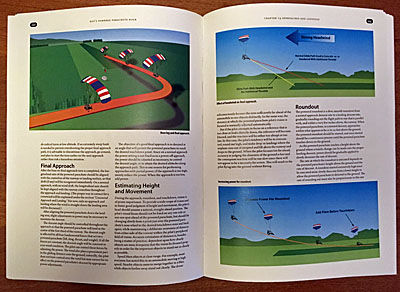
He continues to work on improving training in the sport by working on a second edition to his book (review of original) plus creating digital flashcards for knowledge test and practical test preparation. Going even further Roy is working on an online video ground school course.
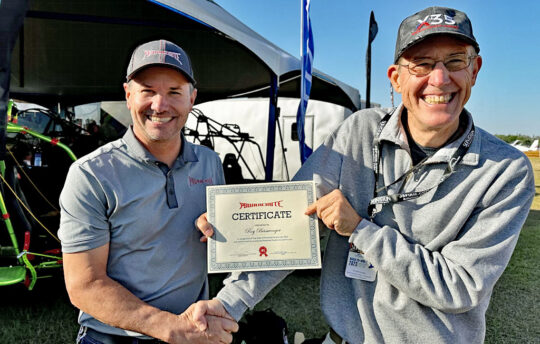
Powrachute owner, Galen Geigley (L) presents the top dealer certificate to Roy Beisswenger at Sun ‘n Fun 2023.
“Powered parachutes continue to have a lot of untapped potential,” believes Roy. ‘Training continues to be the choke point in people getting involved in the sport. Training can be broken down into two areas, introductory flights so more people can be introduced to the sport and serious training for potential pilots committed to obtaining a rating.”
One aspect of FAA’s Mosaic proposal “is disappointing in its current proposed form,” said Roy. “Powered parachutes and weight shift control trikes continue to be the only aircraft categories unable to perform any kind of commercial work. The FAA doesn’t allow for commercial ratings for the pilots and isn’t proposing that special light sport powered parachutes and weight shift control trikes be allowed to be used for commercial work.”
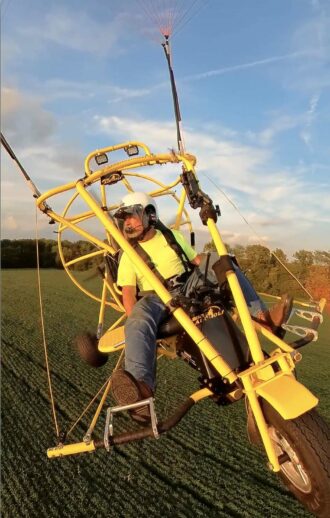
Powered parachutes have a lot of potential uses for agriculture, construction, and surveying, Roy observed. “Hopefully the FAA will allow the industry to tap some of that potential with the final Mosaic rule.”
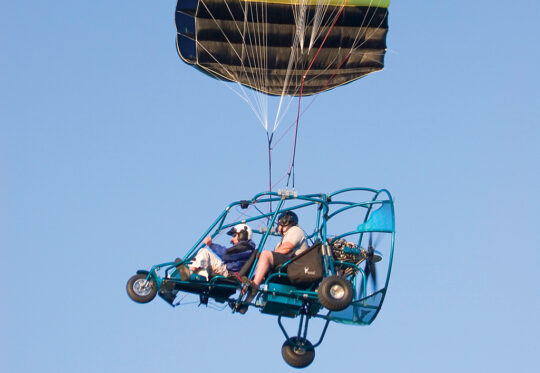
ARTICLE LINKS:
- Powrachute, contact info and all content, on this website
- Page for AirWolf, the top-of-the-line Powrachute with Rotax 912
- Page for Pegasus, a modestly priced Special LSA from Powrachute
- Page for Part 103 capable Sky Rascal single place Powrachute
- EasyFlight.com, Roy’s powered parachute instruction website, operating in Florida and Illinois
- EasyFlight on YouTube, Roy’s video channel
- Roy’s Powered Parachute Book, business website
- Other powered parachute content on this website
- Eagle Air Sports, company website for a flight school in Casco, Michigan, pictured in lead image
Video interview with owner Galen Geigley was originally recorded in 2021 but has been updated for 2023.



Great article, please keep me updated!